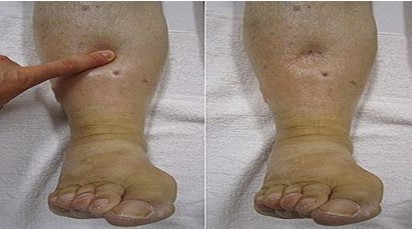A nurse is caring for a client who has diabetes mellitus and has been following a treatment plan for 3 months.
Which of the following laboratory results should the nurse monitor to determine long-term glycemic control?
Fasting blood glucose level.
Glycosylated hemoglobin level.
Oral glucose tolerance test results.
Postprandial blood glucose level.
The Correct Answer is B
The glycosylated hemoglobin level (also known as HbA1c or A1C) is a laboratory test that reflects average levels of blood glucose over the previous two to three months.
It is the most widely used test to monitor chronic glycemic management.
Choice A is not the answer because fasting blood glucose level reflects only short-term glycemic control.
Choice C is not the answer because oral glucose tolerance test results reflect only short-term glycemic control.
Choice D is not the answer because postprandial blood glucose level reflects only short-term glycemic control.
Nursing Test Bank
Naxlex Comprehensive Predictor Exams
Related Questions
Correct Answer is D
Explanation

Toxic shock syndrome (TSS) is a life-threatening condition caused by bacterial toxins.
Common symptoms include high fever, low blood pressure, headache, rapid heartbeat, nausea and vomiting, muscle pain, malaise, confusion, and rashes on the soles and palms.
A generalized rash resembling a sunburn is one of the possible signs and symptoms of TSS.
A. Elevated platelet count: TSS does not cause an elevated platelet count.
B. Decreased total bilirubin: TSS does not cause a decrease in total bilirubin levels.
C. Hypertension: TSS causes low blood pressure (hypotension), not high blood pressure (hypertension).
Correct Answer is B
Explanation
Pitting edema is a common and obvious symptom of right-sided heart failure.

This occurs when fluid retention causes swelling in the lower limbs and sometimes the abdomen.
Choice A is incorrect because poor skin turgor is not a common symptom of right-sided heart failure.
Choice C is incorrect because oliguria, or decreased urine output, is not a common symptom of right-sided heart failure.
Choice D is incorrect because S4 galloping heart sounds are not a common symptom of right-sided heart failure.
Whether you are a student looking to ace your exams or a practicing nurse seeking to enhance your expertise , our nursing education contents will empower you with the confidence and competence to make a difference in the lives of patients and become a respected leader in the healthcare field.
Visit Naxlex, invest in your future and unlock endless possibilities with our unparalleled nursing education contents today
Report Wrong Answer on the Current Question
Do you disagree with the answer? If yes, what is your expected answer? Explain.
Kindly be descriptive with the issue you are facing.
